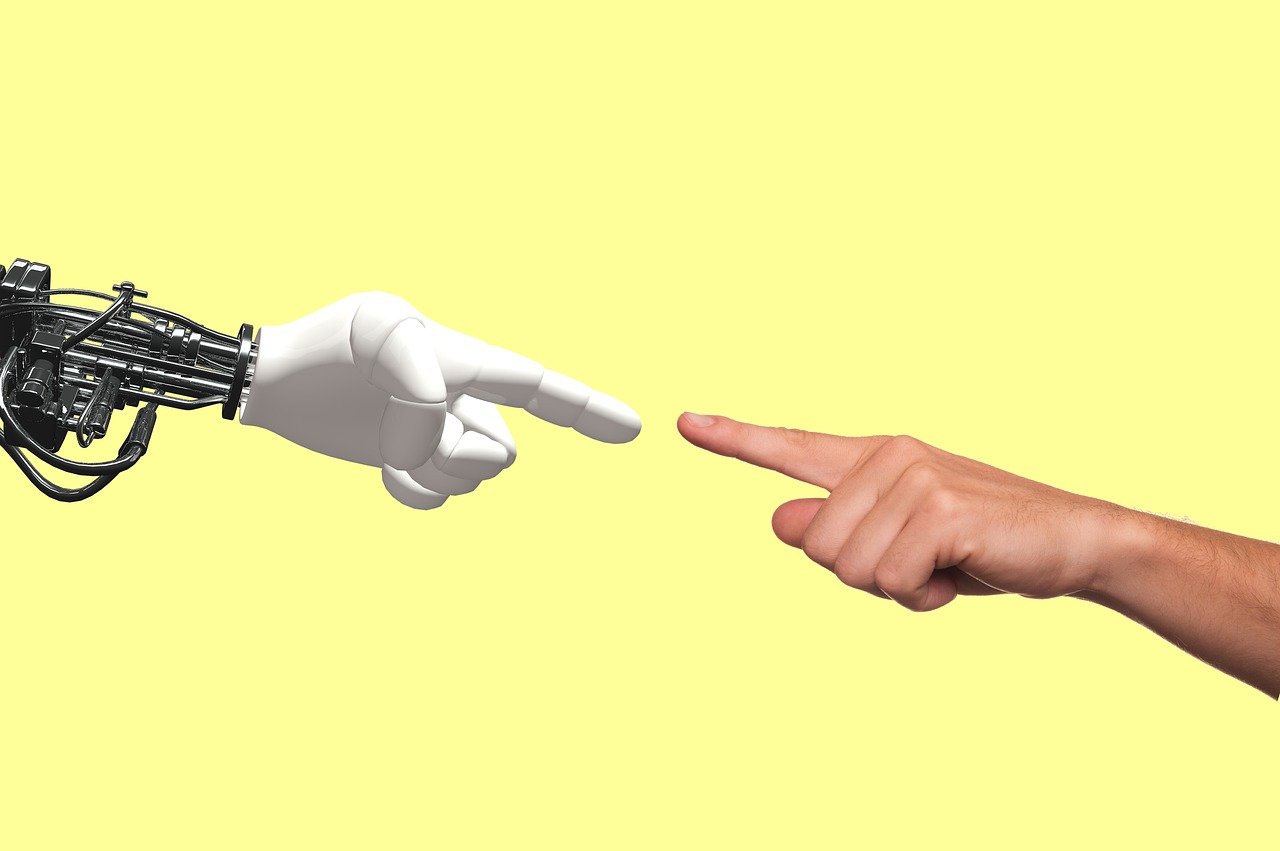The evolution of artificial intelligence will happen faster than the evolution of computing. That’s how SingleStore CEO Raj Verma outlined the current state of affairs at the SingleStore Now conference in San Francisco this week.
A series of factors play a role in this scenario, but with all of them the need for responsibility and what may be evoked by viewing the context of a work by Michelangelo.
Verma used “Creation of Adam” painted by Michelangelo in the 16th century to illustrate the symbolic representation of humans and artificial intelligence. The ability of humans to achieve intelligence and wisdom is related to differences in how we consider computing power and the role of artificial intelligence systems. The brain is our infrastructure. This is not something Verma stated directly, but it rings true when we consider how humanity now depends on software and artificial intelligence to augment our own intelligence. Our brains have evolved just like computing and infrastructure over the past few decades. We’ve built mainframes, PCs and devices, most notably the iPhone, which Verma sees as the most important advancements in getting us to where we are today.
Computing will continue to evolve, but the question is how fast? The internet led to the massively distributed data center approach, which we know as the cloud, a terrible term, but I digress. But today, computing power can only increase so much. With the development of transistors the size of an atom, keeping up with Moore’s law seems impossible. Infrastructure constraints create all kinds of headaches for software vendors, who are now faced with multiple options for optimizing AI systems to be more efficient with precious computing resources.
And that brings us back to Verma, his portrayal of Michelangelo, and why we should consider this data as the real catalyst for understanding why AI is evolving faster than computing.
With AI systems, each advancement becomes a foundation for unlocking new capabilities. There is also the possibility of self-enhancing abilities, which in turn accelerates progress. The progress of artificial intelligence is exponential. Improvements mean new developments.
But what do we value more? Intelligence obtained by using pre-trained models. Groundbreaking advances in artificial intelligence when we use basic models. It is the data that matters. And if it doesn’t come fast, forget real-time apps. They just won’t work. And who the hell wants a slow experience? It is not realistic to expect any progress without fast data.
Shop angle
SingleStore, formerly MemSQL, started as a database company in 2011. The company’s history tells a story of economics and opportunity that shifted the company’s focus from in-memory SQL. They made a bet in those early days: the price of memory would drop enough that performance would remain entirely in memory.
Prices didn’t drop, but they had the right idea. The data volume continued to increase in size. So the team decided to add disk to their on-board storage capabilities, creating a hybrid architecture that configured them to provide fast data in memory and cold data available on disk. Users can then receive real-time transaction data and real-time analytics across the entire data set. In 2020, the company adopted the SingleStore brand name.
How is this related to the evolution of artificial intelligence? It’s all about data and its compound growth. Having ready and analytical transmission data also creates the ability to scale artificial intelligence systems with speed and efficiency. As we’ve seen, AI systems need to be fast, and SingleStore delivers on this with its in-memory and disk capabilities. There’s also the flexibility customers need—a hybrid approach that cuts down on cloud and on-premises services.
With SinglStore vector indexing and JSON management, the capabilities are further opened up. Ease of receiving data, normalization and low latency are just some of the advantages of JSON in data storage environments and artificial intelligence systems. JSON is well compatible with SQL and vectors.
Artificial intelligence systems can only evolve with data. This is very similar to the evolution of humanity, which has evolved almost continuously by assimilating data. The pace of AI evolution only gets faster with more data.

Silicon Valley meets Michelangelo
I can attest to the many keynote speeches I give that come with self-serving statements. But there are rarely key talks that look to Michelangelo for inspiration.
The concept of humanity in tech conversations has accelerated as much as the advancement of artificial intelligence. But I like how Verma approached this in his address.
He reflected on Michelangelo’s creation of Adam in the Sistine Chapel. This shows that God gives life to Adam, which symbolizes the dawn of intelligence and wisdom.
For the past 50 years, art historians have considered Michelangelo’s painting to represent God in the context of brain imaging, Verma said. The painting also shows God with his arm around Sophia, the ancient Greek goddess of wisdom. And there we see it. The brain as our primary architecture for absorbing data, thinking through context, and developing intelligence.
What do we see with artificial intelligence? We are trying to mimic this ability we see in painting by giving machines intelligence by rapidly providing data, acting on it, and using data storage for analysis. Memory and disk speed provide a way for developers to work with services that provide developers with a platform to build real-time applications.
For Verma, the painting tells another story—our journey to create machines that have their own intelligence. This is a vision that speaks to the driver in recreating aspects of cognition through artificial intelligence.
San Francisco is a positive tech city. Rarely do we hear a CEO talk about the negative consequences of technology and how we use it.
Yes, the brain is clearly visible by human touch in the painting. We are well aware of the negative consequences of humanity that we must consider when viewing Michelangelo’s creation. Like the power of our intellect, AI has potential negative effects if used irresponsibly on social media, for example.
Verma says that social media connects us, but its downsides are unfortunately evident in its effect on teenage girls.
“I can text my loved ones and know where they are and their location and everything, and it helps me sleep better at night sometimes,” Verma said.
But at the same time, there have been some worrying downsides. For example, Verma noted the increase in adolescent suicide, especially among girls. Contributing to the rise – horrific acts of cyberbullying and an unhealthy focus on body image that are so harmful to girls.
Giant social networks? How quickly have they reacted to this? Verma said Facebook sees itself as a printing press and “behind that chestnut is hiding.”
We now face our responsibility in the field of artificial intelligence. Will we act responsibly or allow it to become something we deeply regret for its impact on our humanity? How fast is too fast?
#evolution #artificial #intelligence #happen #faster #evolution #computing
Image Source : thenewstack.io


